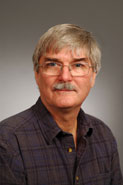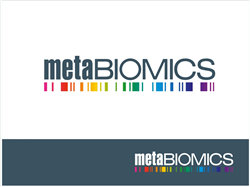-

Patrick Gillevet, Ph.D
Professor
Director, Microbiome Analysis Center.
Program Area: Biocomplexity and Ecology
Research Focus: Environmental Molecular Biology
Phone: (703) 993-1057
pgilleve@gmu.edu
Dr. Gillevet is using state of the art molecular techniques to study problems in Molecular Environmental Sciences and Genomic Evolution. He is working on several molecular systematics projects which include: the use of molecular methods to characterize the genus Pseudomonas and Bacillus; the development of a prototype database to integrate phenotypic, metabolic, and genotypic data; the use of molecular methods to characterize the toxic dinoflagellate Pfiesteria piscicida; use of molecular techniques to monitor halophilic microbial communities, use of molecular techniques to monitor soil ecosystems during bioremediation processes, and the development of a new methods and techniques to detect molecular markers for scanning natural microbial populations.
He is involved in the bioinformatics program at IB3, developing Laboratory Information Management (LIMS) systems for large scale sequencing projects, implementing analytical tools for molecular systematics and microbial classification, and modelling non-linear metabolic systems. He is also developing new mass spectrometry technology for high throughput genomic sequencing and environmental monitoring.
EDUCATION
1976-1982 Univ. of Manitoba Biochemistry Ph.D.
1972-1976 Univ. of Toronto Microbiology B.Sc.
PROFESSIONAL EXPERIENCE
2002-present:
Associate Professor,
Department of Environmental Sciences and Policy
George Mason University, Fairfax, Virginia 22030
2000-present:
Associate Professor,
The School of Computational Sciences
George Mason University, Fairfax, Virginia 22030
1996-2000:
Research Associate Professor,
The Institute for Bioscience, Bioinformatics and Biotechnology
George Mason University, Fairfax, Virginia 22030
1994- present:
Affiliate Professor,
Department of Biology,
George Mason University, Fairfax, Virginia 22030
1993- 2000:
Affiliate Associate Professor,
Institute for Computational Sciences and Informatics,
George Mason University, Fairfax, Virginia 22030
At George Mason University, we are using state of the art molecular techniques to study problems in Molecular Environmental Sciences and Genomic Evolution. We are working on several molecular systematics projects which include: the use of molecular methods to characterize the genus Pseudomonas and Bacillus; the development of a prototype database to integrate phenotypic, metabolic, and genotypic data; the use of molecular methods to characterize the toxic dinoflagellate Pfiesteria piscicida; use of molecular techniques to monitor halophilic microbial communities, use of molecular techniques to monitor soil ecosystems during bioremediation processes, and the development of a new methods and techniques to detect molecular markers for scanning natural microbial populations. We are also developing new capillary technology technology for high throughput genomic sequencing and environmental monitoring.
1993-1996:
Visiting Scientist,
National Center for Human Genome Research,
National Institutes of Health, Bethesda, MD 20892
As a Visiting Scientist at the National Center for Human Genome Research, NIH, I established an integrated Fluorescent sequencing facility to rapidly sequence cDNA involved in Genetic lesions such as Trinucleotide repeat expansions. This system includes a LIMS based on GDE for the automated analysis of sequence data and it's presentation in a HTML based browsing system on the World Wide Web and had a throughput of over a million bases per year. I developed a modified version of the Genomic Walking sequencing technology to detect hypomethylation events in human disease states such as Prader-Willi/Angelman syndrome and Prostate cancer. I characterized a highly conserved Line Element that rearranges during development.
1990-1993:
Director, Harvard Genome Laboratory,
The Biological Laboratories,
Harvard University, Cambridge, MA 02138
I supervised the implementation of a program to sequence the model organism Mycoplasma capricolum using a new probing strategy, Multiplex Genomic Walking. The project was comprised of a computational group (4 persons), two supporting scientists, a development technical staff of 3 persons, and a production line staff of 5 persons. The project finished an initial stage of development and had the capability of producing a million base pairs of finished sequence per year. I supervised the development of a software environment which facilitated the handling of data from the Walking strategy. The core software, called the Genetic Data Environment (GDE) is an XWindows based multiple sequence editor which allows one to hook in external functions with very little effort. All processes in the wet lab were tracked and controlled by a Graphic User Interface (EZshelltool) linked to an internal database. This laboratory information management system has recently been incorporated into the Wisconsin package (SeqLab) and is commercially available.
1988-1990:
Technical Director,
Center for Prokaryotic Genome Analysis.
Department of Microbiology, University of Illinois, Urbana, IL 61801
As the Technical Director of the Center for Prokaryotic Genome Analysis, I established wet lab and computer facilities at the University of Illinois. The mandate of the Center was to accomplish the large scale sequencing of entire prokaryotic genomes. The approach taken at the Center encompassed a hybrid physical mapping strategy using both top down and bottom up techniques and the integration of this mapping strategy with Fluorescent and Multiplex sequencing technology. I installed the necessary automated equipment for the large scale sequencing endeavor and trained technical personnel and students in a variety of methodologies related to the above. I developed a "Thermal Cycle" Sequencing technique on the ABI fluorescent sequencer that is now widely used in both the academic and industrial community.
1984-1988:
Post Doctoral Associate.
Department of Biochemistry and Molecular Biology.
University of Florida, Gainesville, FL 32610.
The goals of the project was to delineate the mechanism of mitochondrial ribosomal protein evolution and correlate it with the evolution of the mitochondrial and nuclear genomes. Specifically, the project involved the isolation and characterization of cDNA clones from lambda gt11 expression libraries using antibodies to bovine mitochondrial ribosomal proteins. I installed several databases, such as Genbank and the Protein Inquiry Resource, on a VAX 11/780 and was closely involved in their maintenance and operation.
1982-1984:
Post Doctoral Associate.
Department of Biochemistry and Molecular Biology,
University of Florida, Gainesville, Florida 32610.
The goal of this project was to isolate the cDNA clone for Calmodulin in an expression vector and to modify this construct by site directed mutagenesis. This research involved the construction of a cDNA library to bovine brain mRNA and the subsequent screening of this library to identify a full length Calmodulin clone.
72. T. K. Sawyer, T. A. Nerad, C. J. OKelly, M. T. Peglar, and P.
M. Gillevet. Stellate Amoebae-Enigmatic Life Cycle Stages of Several Genera
of Marine or Estuarine Amoebae. AERS (Aestuarine Research Society) meeting
held at the Virginia Institute of Marine Science held at Gloucester Point,
VA on April 12-13, 2000
73. D Emerson, P Gillevet, C Lydell, T Nerad, A Torzilli, A Biotic
Survey of an Estuarine Saltmarsh on the Atlantic Coast of Virginia. Biotic
Surveys and Inventories Meeting, Orcas Island, Washington, May 2000
74. T. A. Nerad, G. C. Garmin, S. Webb, B. Brown, M. T. Peglar, and
P. M. Gillevet. Investigation of the Causality of Dermal Lesions in MenHaden
from the James River. Joint Meeting of the Society of Protozoologists and
the American Society of Parasitologists held in San Juan, Puerto Rico from
June 24-28th, 2000
75. T. A. Nerad, G. C. Garmin, S. Webb, B. Brown, M. T. Peglar, and
P. M. Gillevet. Investigation of the Causality of Dermal Lesions in Menhaden
from rhe James River, VA (October 1999). Harmful Algal Bloom Symposium,
Woods Hole Oceanographic Institute from December 5th-9th, 2000
76. M. T. Peglar, P. M. Gillevet, T. A. Nerad, C. J. OKelly, and
T. K. Sawyer. Differentiation of Stellate Gymnamoebae, Pfiesteria piscicida
and Related Dinoflagellates Recovered from the Chesapeake Bay Region of the
Eastern United States. Harmful Algal Bloom Symposium, Woods Hole Oceanographic
Institute from December 5th-9th, 2000.
77. T. A. Nerad, M. T. Peglar, G. C. Garman, S. Webb, B. Brown, C.
J. OKelly, and Patrick Gillevet. Pfiesteria Piscicida: Fad or Fallacy.
Harmful Algal Bloom Symposium, Woods Hole Oceanographic Institute from December
5th-9th, 2000.
78. P. M. Gillevet, J. Peters, K. Ardahl, M. Sikaroodi, W. J. L. Sladen.
Hybridization of Northern Swans: Determining Hybridization Using the Mitochondrial
D-loop. International Swan Symposium Arlie, VA 2000.
79. C. D. Litchfield, A. Irby, D. K. Mills, I. Llorente, P. M. Gillevet,
and A. Oren Metabolic and Microbial Diversity in a Solar Saltern in Newark,
CA, USA. The 3 rd International Congress on Extremophiles Hamburg Germany
Sept. 3-7, 2000
80. D. K. Mills, K. Fitzgerald, I. Llorente, C. D. Litchfield, P. M.
Gillevet. Amplicon Length Heterogeneity Fingerprinting to Monitor Nutrient
Impact During Bioremediation. In Situ and On-Site Bioremediation, 6th International
Symposium, June, 2001.
AREAS OF SCIENTIFIC INTEREST & SPECIALIZATION:
- Molecular Environmental Sciences
- Genomic Evolution
RESEARCH PROJECTS:


